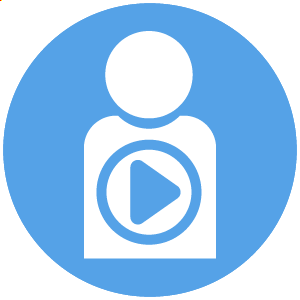How to publish the textbook your students need
,
Presenters

Session description
Purpose & objective
There is never a textbook that contains exactly what your students need.
This talk will equip educators and subject matter experts with the knowledge and skills needed to write, format, and publish their own textbooks.
By the end of this presentation, participants will:
1. Understand the importance of customized textbooks: Participants will gain an understanding of how tailored educational materials can better meet the diverse learning needs of students, thereby enhancing the quality of education.
2. Be familiar with free digital publishing tools: Participants will be introduced to a variety of free digital tools for writing, formatting, and publishing.
3. Know how to format a book for publishing in textbook or digital form: Participants will understand the need of layout design, content organization, and formatting to make their textbooks visually appealing and easy to navigate.
4.Navigate the publishing process: Participants will understand the steps involved in publishing a textbook, from manuscript preparation to distribution, and how to do it at no cost.
Through these outcomes, the talk aims to empower educators to take control of their educational content, thereby contributing to a more equitable and inclusive educational landscape that meets the diverse needs of all students.
I published a book tailored for my students as well as a guide specifically designed for teachers in my situation. You can do it too!
Outline
Introduction (3 minutes)
Content: Brief overview of the talk's purpose and objectives.
Process/Activity: Quick poll to gauge the audience's familiarity with textbook creation.
The Importance of Customized Textbooks (5 minutes)
Content: Discussing the need for tailored educational materials to meet diverse learning needs.
Process/Activity: Audience reflection and sharing; poll and word cloud.
Overview of Free Digital Tools (7 minutes)
Content: Introduction to free tools for writing, formatting, and publishing.
Process/Activity: Live demonstration of one tool.
Mastering Formatting Techniques (10 minutes)
Content: Tips on layout design, content organization, and visual elements.
Process/Activity: Device-based activity; participants will try formatting a sample page.
Navigating the Publishing Process (10 minutes)
Content: Steps involved in publishing, from manuscript to distribution.
Process/Activity: Interactive Q&A; participants can submit questions.
Wrap-Up (5 minutes)
Content: Summary and key takeaways.
Process/Activity: Interactive Q&A; participants can submit questions.
Supporting research
Prasad, Deepak, and Tsuyoshi Usagawa. “Scoping the Possibilities: Student Preferences towards Open Textbooks Adoption for E-Learning.” Creative Education, vol. 05, no. 24, 1 Jan. 2014, pp. 2027–2040, www.scirp.org/journal/paperinformation.aspx?paperid=52803, https://doi.org/10.4236/ce.2014.524227. Accessed 23 Sept. 2023.
Ferreira, Jose. “OER and the Future of Publishing.” EdSurge, EdSurge, 10 Aug. 2014, www.edsurge.com/news/2014-08-10-oer-and-the-future-of-publishing. Accessed 23 Sept. 2023.
Goldman, Eric, and Rebecca Tushnet. “Self-Publishing an Electronic Casebook Benefited Our Readers - and Us.” HeinOnline, 2015, heinonline.org/HOL/LandingPage?handle=hein.journals/washjolta11&div=6&id=&page=. Accessed 23 Sept. 2023.
“Assessment of K–12 Educators’ Awareness and Need for Online Self-Publishing Services in the Classroom - ProQuest.” Proquest.com, 2023, www.proquest.com/openview/7a40512eee100d01d2d68e0fb9aed6c3/1?pq-origsite=gscholar&cbl=18750. Accessed 23 Sept. 2023.
“Self-Publishing: The New Frontier - ProQuest.” Www.proquest.com, www.proquest.com/openview/46d1a512b1d1d806e0ab228ca7f4bb7f/1.pdf?pq-origsite=gscholar&cbl=1036368. Accessed 23 Sept. 2023.
Bartlett-Bragg, AE. “An Investigation into Adult Learners’ Experiences of Developing Distributed Learning Networks with Self-Publishing Technologies.” Uts.edu.au, 2013, opus.lib.uts.edu.au/handle/10453/28070, http://hdl.handle.net/10453/28070. Accessed 23 Sept. 2023.
Session specifications
Tablet: iOS, Windows, Android
Change Agent
- Facilitate equitable use of digital learning tools and content that meet the needs of each learner.
Empowering Leader
- Support educators in using technology to advance learning that meets the diverse learning, cultural, and social-emotional needs of individual students.
Leader
- Advocate for equitable access to educational technology, digital content and learning opportunities to meet the diverse needs of all students.
 Return
Return Listen and learn: Edtalk
Listen and learn: Edtalk  Trips and Tours
Trips and Tours Recorded Session
Recorded Session Virtual Session
Virtual Session